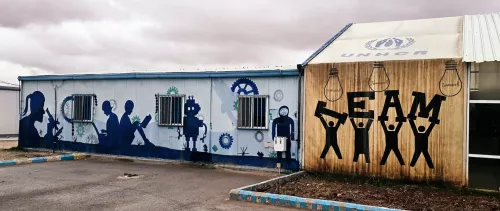
To borrow the words of the 2030 Agenda for Sustainable Development, information and communication technologies (ICTs) and connectivity have “great potential to accelerate human progress, to bridge the digital divide and to develop knowledge societies.”
They can open the door to innovative services, create new growth opportunities and help countries leapfrog chronic barriers to development.
Yet, many people in the world’s poorest countries are unable reap the benefits of these life-changing technologies.
Launched today, the Connectivity in Least Developed Countries: Status report 2021, co-produced by the International Telecommunication Union (ITU) and the United Nations Office of the High Representative for the Least Developed Countries, Landlocked Developing Countries and Small Island Developing States (UN-OHRLLS), reveals that despite 76 per cent of the population living in the Least Developed Countries (LDCs) is covered by a mobile broadband signal, only 25 per cent are online.
This means that some 50 per cent of the one billion-strong population who could use the Internet do not, otherwise referred to as the ‘usage gap’.
The report identifies the reasons for this wide and persistent usage gap in the LDCs and provides practical solutions to overcome them.
Achieving universal and affordable access to the Internet
Efforts to close the digital divide have been ongoing for many years.
SDG Target 9c sets two targets aimed at increasing connectivity in the LDCs with a 2020 deadline:
- at least 95 per cent of the population should be covered by a mobile broadband network,
- and mobile data prices should not exceed 2 per cent of monthly income.
Only two of the 46 LDCs met both targets within the 2020 timeframe: Bhutan and Bangladesh. Other countries have made significant progress: four countries met the 95 per cent coverage target and two others met the 2 per cent affordability target.
This leaves 38 LDCs where network coverage remains limited and Internet access is too costly.
But the Connectivity in Least Developed Countries: Status report 2021 notes that achieving Target 9c alone would not be enough to encourage the remaining 75 per cent or so currently offline in the LDCs to use the Internet.
In fact, the persisting usage gap – even among those countries which have achieved or partly achieved SDG 9c – reveals that coverage and affordability are not the only barriers to Internet use in LDCs.
Rather, a lack of awareness of what the Internet is by far the main reason those in the LDCs are not using it. In a survey conducted in eight African or Asian LDCs in 2017 and 2018, 78 per cent of respondents said they hadn’t known what the Internet was. In Cambodia, this figure reached 97 per cent.
The report also finds that the high prices of services for both devices and services, a widespread lack of digital skills, and a limited awareness of the Internet and its benefits are some other compelling reasons for this usage gap.
The report outlines ways to expand digital access and provides concrete policy recommendations to promote universal connectivity. It recommends raising awareness of online benefits, improving everyone’s digital skills, ensuring connectivity in rural communities, and making hardware and services more affordable.
Launched by ITU today, the Partner2Connect Digital Coalition aims to foster meaningful connectivity and digital transformation in hardest-to-hit countries, including Least Developed Countries, Landlocked Developing Countries and Small Island Developing States.
The platform will encourage global leaders to mobilize commitments, resources and partnerships to implement solutions and projects across four focus areas: connecting people everywhere; empowering communities; building digital ecosystems and incentivizing investments.
Committed to leaving no one offline
The 2030 Agenda for Sustainable Development pledged to “leave no one behind”. In an increasingly digital world, this also means leaving no one offline.
Two key development meetings next year aim to galvanize national and international action to boost LDC connectivity.
Organized by UN-OHRLLS, the 5th United Nations Conference on the Least Developed Countries (LDC5) will be held in January 2022, and ITU’s World Telecommunication Development Conference in June 2022, will both showcase solutions, secure pledges and solidify commitments to a global sustainable development agenda with connectivity at the core.
We encourage you to attend and engage in these upcoming dialogues to help us close the digital divide and bring the benefits of digital connectivity to everyone in the LDCs.

